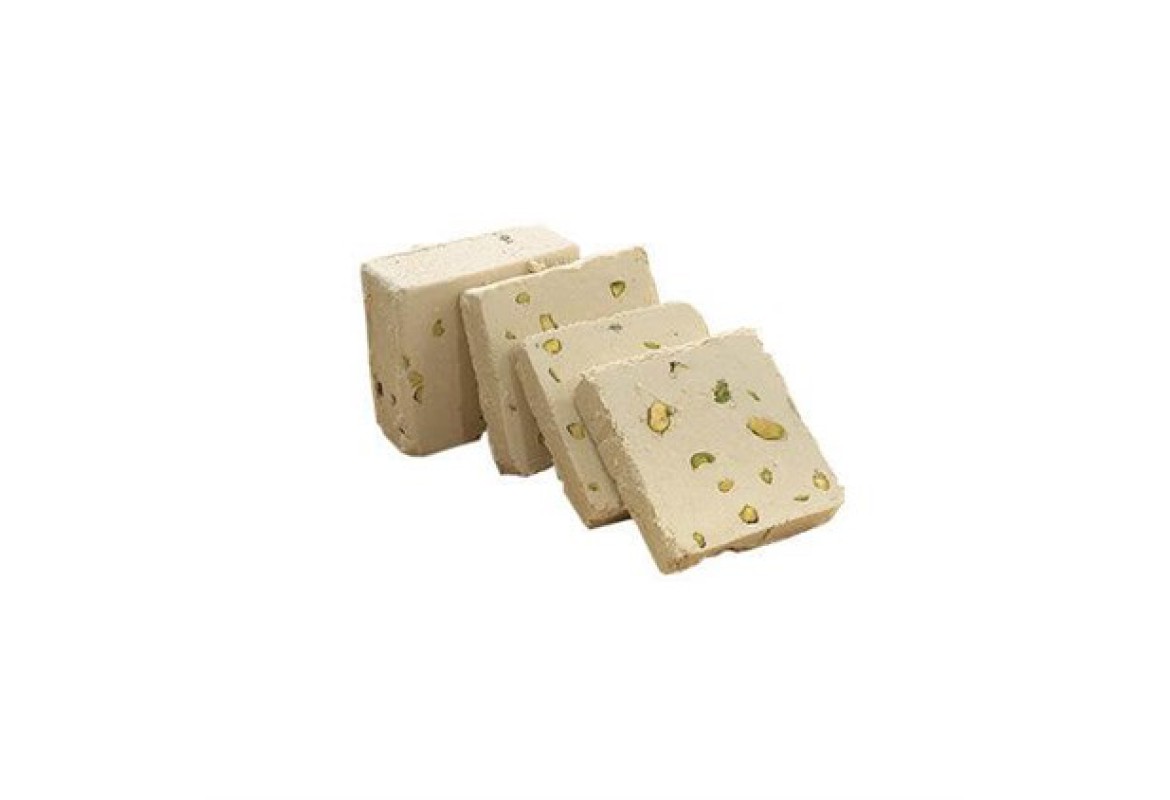
Kas yra Helva
Halva, sodrus, trapus desertas, mėgstamas daugelyje kultūrų, yra toks tankus, kad beveik jaučiasi kaip valgis – ir tuo pačiu nėra visiškai nesveikas. Yra daugiau nei šimtas chalvos rūšių, kurios dažniausiai yra malti ir saldinti riešutai ir (arba) sėklos.
Jo, kaip pagrindinio deserto, vaidmuo apima tiek amžių ir kultūrų, kad vargu ar galima teigti, kad jis priklauso kokiai nors vienai tautybei. Mėgstamas ir plačiai parduodamas parduotuvėse ir turguose visoje buvusioje Sovietų Sąjungoje, tačiau ten jis labiausiai siejamas su Vidurine Azija – tašku, iš kurio chalva pateko į Rusiją, Ukrainą ir Baltarusiją. Centrinė Azija istoriškai ir geografiškai yra artimesnė turkų, arabų ir indų chalvos valgymo kultūroms.
Halva pavadinimas kilęs iš arabiško žodžio „halwa“, reiškiančio saldumynus ar desertus. Dėl chalvos kilmės ginčijamasi, nors daugelis rusakalbių šaltinių teigia, kad ji atsirado Irane net prieš 2500 metų.
Panašu, kad VII amžiuje Arabijoje šis žodis reiškė datulių ir pieno pastą, o IX amžiuje – pastą iš miltų ir cukraus. Dabar chalva gali reikšti dvi saldumynų kategorijas. Vienas iš jų yra želatininis keptų miltų ir cukraus mišinys, populiarus Graikijoje, Indijoje ir Artimuosiuose Rytuose. Kitas, populiariausias buvusioje SSRS, pagamintas iš riešutų arba sėklų sviesto ir cukraus, populiarus Viduržemio jūroje, Balkanuose, Rytų Europoje, Centrinėje Azijoje, kai kuriose Artimųjų Rytų ir Indijos šalyse. Kai kuriose šalyse chalva gaminama ir iš vaisių ar morkų.
Tadžikistane ir Uzbekistane chalva vadinama „лавз“. Ten jis pateikiamas dviem versijomis. Minkšta versija gaminama iš cukraus sirupo, kiaušinio baltymo ir sezamo sėklų. Kietas variantas gaminamas į cukrų įmaišius sezamo sėklų. Ištrauktas cukrus gaunamas verdant cukrų ir vandenį, o išvirtą cukrų plakant, kol jis virsta balta, tiršta, lanksti medžiaga.
Posovietiniame pasaulyje chalva beveik išimtinai reiškia deserto variantą, kurio pagrindą sudaro sėklos arba riešutai. Sezamas yra įprastas pagrindas, kaip ir saulėgrąžų sėklos. Saulėgrąžų chalva yra ypač Rytų Europos veislė, nes saulėgrąžų sėklos plačiai auginamos ir vartojamos Rytų Europoje. Riešutų chalva taip pat yra įprasta ir gali būti pagaminta iš graikinių riešutų, žemės riešutų ar pistacijų, kad būtų galima paminėti keletą veislių.
Buvusios SSRS turgavietėse ir turgavietėse dažnai prekiaujama dideliais įvairių spalvų chalvos luitais, išmargintais riešutais ar razinomis, kuriuos galima nusipirkti pagal svorį. Halva taip pat masiškai gamina dauguma didžiųjų buvusioje SSRS veikusių konditerių, parduotuvėse ir parduotuvėse ji parduodama kaip mažesni šokoladu padengti batonėliai arba fasuoti blokeliai.
Jis taip pat naudojamas kaip saldainių ir pyragų sudedamoji dalis. Maskvos konditerijos gaminių įmonė Рот Фронт (vok. „Raudonasis frontas“) gamina chalvos saldainius – mažus chalvos kubelius, aplietus šokoladu ir suvyniotus į blizgančią raudonai auksinę foliją, kurie yra ypač populiarūs. Vafliniai sausainiai arba „вафли“ su chalvos sluoksniais yra dar vienas gerai žinomas skanėstas. Rusiški naminių chalvos pyragų receptai skiriasi, tačiau daugelis apima kremo sluoksnius, pagamintus iš chalvos ir kondensuoto pieno (сгущёнка).
Riešutų arba sėklų chalva, gaminama masiškai, susideda iš trijų pagrindinių ingredientų: maltų riešutų arba sėklų; cukrus, medus arba melasa; ir putojančios medžiagos, tokios kaip saldymedžio šaknis, muilo žolė arba zefyro šaknis. Putojantis agentas padeda sukurti pluoštinę, sluoksniuotą konsistenciją, tokią būdingą chalvai. Taip pat gali būti pridėta kitų kvapiųjų medžiagų, tokių kaip šokoladas, kakavos milteliai, vanilė ar džiovinti vaisiai.
Rusijoje chalva dažniau perkama nei ruošiama namuose. Tačiau kitose šalyse chalvos gaminimas rankomis yra sena tradicija. Uzbekistane terminas „кандалатчи“ konkrečiai reiškia žmogų, kuris žino, pavyzdžiui, chalvos ruošimo paslaptį.
Pagaminti chalvą šiuolaikinėje virtuvėje iš tikrųjų gana paprasta. Medus „домашняя халва“ (naminis халва) naudojamas dažniau nei masinės gamybos versijose. Kai kurie „тахинная халва“ (tahini chalvos) receptai yra tokie paprasti, kaip tahini (sezamo pastos) ir medaus derinimas. Kiti – kiaušinių baltymai, o dar kiti – miltus, sviestą ir (arba) pieną.

